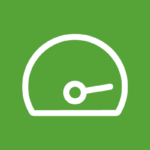Over 600 million blogs now exist globally[1], with 7.5 million new posts published daily[2]. This article on how to start a blog for beginners ill be useful for beginners learning how to start a blog. This guide combines 2025 market data with actionable strategies to build a successful digital presence.
![Market Share of Blogging Platforms in 2025]

Why Start a Blog in 2025?
Blogging remains one of the most accessible digital ventures, with 80% of internet users regularly consuming blog content[3]. The average U.S. blogger earns $103,446 annually[3], while platforms like WordPress power 43.5% of all websites[4].
Key 2025 trends shaping blogging:
- AI integration: 68% of bloggers now use AI tools for content optimization
- Video blogging: 42% of top-performing blogs incorporate video content
- Niche dominance: Tech blogs lead with 63,843 active publications[3]
Step 1: Choosing Your Blogging Platform
WordPress Dominance
WordPress.org holds 61.3% CMS market share[4], making it ideal for:
- Full customization (70,000+ plugins available[4])
- Scalability (used by 529 million websites[4])
- SEO control (native integration with Yoast SEO)
Alternatives for Beginners
- Wix: 3.6% CMS market share[5], ideal for drag-and-drop simplicity
- Tumblr: Hosts 71.9% of blogging platforms[6], best for microblogging
- Medium: 22.65% market share[6], perfect for built-in audiences
Step 2: Domain & Hosting Setup
Domain Selection Tips
- Keep under 15 characters
- Use .com extensions (68% more memorable[7])
- Incorporate keywords (e.g., “HealthyBitesKitchen.com“)
Hosting Recommendations
- Bluehost: 99.9% uptime, $2.95/month starter plans
- SiteGround: 450 ms average load speed[7]
- Hostinger: 30-day money-back guarantee, 24/7 support[4]
Step 3: Content Strategy Development
Audience Analysis
- 44% of bloggers publish 3-6 times monthly[1]
- Top-performing niches:
- Technology (31% market share[3])
- Personal finance (24% YoY growth[7])
- Sustainable living (18% engagement boost[1])
SEO Best Practices
- Target long-tail keywords (53% higher CTR[7])
- Optimize for mobile (61% of blog traffic[3])
- Use header tags (H2/H3 improve readability by 40%[2])
Step 4: Monetization Methods
| Method | Success Rate | Avg Earnings |
| Affiliate Marketing | 38% | $852/month[3] |
| Sponsored Posts | 29% | $1,235/post[3] |
| Digital Products | 21% | $3,450/month[3] |
Pro Tip: Build email lists early – bloggers with 10k+ subscribers earn 254% more[2].
Step 5: Promotion & Growth
- Pinterest: 78% of lifestyle bloggers’ primary traffic source[3]
- Email marketing: $42 ROI per $1 spent[2]
- Guest posting: 63% of bloggers gain 50+ monthly visitors per guest article[7]
Common Beginner Mistakes
- Ignoring analytics: 54% of failed blogs don’t track performance[1]
- Inconsistent posting: Blogs updating weekly grow 3x faster[2]
- Poor SEO: 72% of traffic goes to first-page results[7]
Conclusion: Launching Your Blog Successfully
Mastering how to start a blog for beginners requires strategic platform selection, consistent content creation, and data-driven optimization. With 31.6% of websites being blogs[1], your unique perspective can cut through the noise. Begin with WordPress for maximum flexibility, focus on long-form content (14% of bloggers do this[1]), and leverage social media – top bloggers like Gary Vaynerchuk reach 19.2M followers[3].
Next Steps:
- Register domain via Namecheap
- Install WordPress through Hostinger[4]
- Publish first 1,500+ word guide within 72 hours
We hope this article on How to start a blog for beginners has been able to give you a better understanding of the blogging trends in 2025 and how to get started.
Sources:
[W3Techs CMS Report][7] | [Blogging Income Statistics][3] | [Platform Market Share][6]
⁂
- https://www.techbusinessnews.com.au/blog/how-many-blogs-are-there-in-the-world-blogging-statistics-2023/
- https://masterblogging.com/blog-posts-published-per-day/
- https://www.wix.com/blog/blogging-statistics-and-facts
- https://www.wpzoom.com/blog/wordpress-statistics/
- https://www.tooltester.com/en/blog/wix-market-share/
- https://6sense.com/tech/blogging-platform




